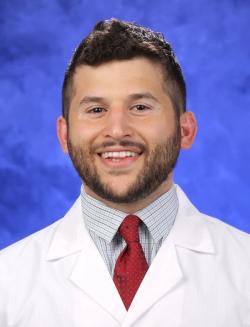
OR WAIT null SECS
The Three Pillars of Cardiovascular Advancement
How technology, innovation, and preventive care drove the last 10 years of improved public heart health.
The first decade of the 21st century established cardiovascular disease as a public health crisis. It established major heart events as the greatest killer in the US, their common comorbidities like diabetes as overwhelming afflictions, and its affected population to be in the millions—potentially, billions.
But it also set an agenda for clinicians. It provided a scope, scale, and context of the epidemic, and it introduced the potential tools that would combat the burden. It set up these last 10 years of discovery, progress, and policy response.
A New Age in Prevention
From 2010-2019, cardiovascular care built on its work in ways few thought possible. Its advances were almost indefinable—a response fitting to the massive problem it is addressing. But the greatest work may have been made in 3 fields: prevention, innovation, and technology. After years of pushing for a spot in the public’s conscience, cardiovascular health was thrust into the forefront of many public health initiatives in the 1990s and 2000s. Those discussions centered around tangible goals, from ending smoking to improving dietary habits. And efforts have paid dividends: rates of cardiovascular disease began to fall until recently when that decline began to slow.
Even with strides in progress, cardiovascular disease remained the top cause of death for Americans. The continued problem drove solution from another avenue: an explosion in novel treatments.
At the start of the decade, the hype around SGLT2 inhibitors was beginning to build. When the drug class agents began to receive approvals in 2013 for reducing HbA1c, the discussion moved to their overall potential. Today’s rhetoric around SGLT2 inhibitors have taken on entirely new meaning.
The results of the DECLARE and DEFINE programs, as well as DAPA-HF, have completely rewritten clinical understanding and the breadth of potential SGLT2 inhibitor uses. And it’s becoming easier to list the benefits the drug class doesn’t provide the average heart disease patient.
“Diabetes drugs are no longer just confined to hemoglobin A1c reduction. But rather, where we started evaluating quite rigorously in the last decade is the cardiovascular effects, either bad or good, of diabetes drugs,” Deepak Bhatt, MD, MPH, executive director of Interventional Cardiovascular Programs at Brigham and Women's Hospital and professor of medicine at Harvard Medical School, told MD Magazine®. “ I think that is an incredible shift in our thinking.”
With results of DAPA-HF presented at ESC 2019 indicating dapagliflozin reduced risk of death and hospitalization by 26% reduced in patients with heart failure with reduced ejection fraction (HFrEF) regardless of diabetes status, the theory these drugs could have uses outside of patients with diabetes was finally confirmed. The results completely changed the paradigm of cardiovascular prevention.
While there is no doubt the SGLT2 inhibitor class will continue to be one of the most studied and discussed areas in cardiology, another treatment may accompany it through the next decade as one of the most significant advances since 2010.
The debate on the use and potential benefits of fish oil and fish oil supplements has raged for decades and while this is still ongoing, there is little room for argument on the potential of eicosapentaenoic acid—more specifically, icosapent ethyl (Vascepa)—for prevention. That argument was settled with the release of REDUCE-IT results earlier this year.
The therapy was shown to effectively reduce the risk of major cardiovascular events by 25% and death by 20%, signaling icosapent ethyl’s potential as the start of a new class of cardiovascular therapies. This year, a US Food and Drug Administration (FDA) advisory committee voted unanimously in favor of expanding the therapy’s label.
“I do honestly feel it's one of the major breakthroughs of the decade, not just in terms of the drug studied—icosapent ethyl that surely looked quite good in the trial—but I do think it'll lead to a whole new class of EPA or eicosapentaenoic acid-based therapeutics,” said Bhatt, who served as the principal investigator of the REDUCE-IT trial.
A Changing Landscape
The end of this past decade also brought about a revelation and change the previous generation of physicians decades ago could have never seen coming. From the changing role of aspirin, to the use of transcatheter aortic valve replacement (TAVR), and the onset of wearable technology as a consumer product, the past decade has been loaded with a rate of innovation on par with that of any other field.
Low-dose aspirin has long been a staple in treatment algorithms, a popular medicine cabinet fixture for its use in the prevention of cardiovascular events. But recent data has forever altered the standing of a medication that had once been prescribed to millions. For years leading up to 2019, research and data began to arise questioning its safety and efficacy in some patient populations in that came to a head with the release of the 2019 ACC/AHA Guideline on the Primary Prevention of Cardiovascular Disease.
The new guidelines included recommendations that low-dose aspirin not be administered on a routine basis for prevention of atherosclerotic cardiovascular disease in adults older than 70, that and it should not be administered for primary prevention in adults at any age with an increased risk of bleeding.
Since then, aspirin has continued to come under fire with results of other studies, like TWILIGHT-ACS, showing it is associated with increased bleeding risk in certain populations.
Another innovation that it seems will carve out its own place in the landscape of cardiology for years to come is TAVR. With the first TAVR procedure being performed in Europe in 2002 and FDA approval coming in 2011, the procedure gave new meaning to the term “minimally-invasive.”
Aortic stenosis treatment once meant patients had to undergo surgical aortic valve replacement—requiring open-heart surgery, stopping the patient’s heart, and a lengthy inpatient recovery process. TAVR has revolutionized this process, and become a first-line therapy for many patients with severe aortic stenosis.
Instead of open-heart surgery, patients have an artificial valve placed in the aortic valve through use of a catheter, typically placed in the chest or leg. Less than a decade after its approval, the procedure patients undergo can take less than an hour. Most are able to go home within a couple days.
The Future of Care, Today
“It’s been a milestone and probably a paradigm shift. I emphasized earlier, that TAVR is game-changing for a lot of patients who were otherwise ineligible for surgery, or are denied surgery for being too high risk,” Tsuyoshi Kaneko, MD, cardiac surgeon at Brigham and Women’s Hospital and assistant professor of surgery at Harvard Medical School, told MD Mag. “So, I think from that standpoint, and how much impact it has, in terms of access to more patients, I think it's a pretty huge milestone.”Consumer-based technology—the likes of which were only known in science-fiction—have also come to innovate modern cardiovascular care. Wearables in particular have gone from a hopeful concept to the future of home-based diagnosis in the eyes of some clinicians.
In the latter portion of the decade, wearable technology competition increased dramatically. Since the 2017 approval of KardiaBand from AliveCor, companies including Apple, Samsung, and Google’s sister company Verily have all sought to begin introducing products to the space.
At the end of 2018, Apple launched the electrocardiogram (ECG) app for its Apple Watch Series 4. The move brought an ECG reader to the wrists of millions of consumers. The same smartwatch featured an irregular heart rhythm notification with the ability to monitor heart rhythms and alert users of possible atrial fibrillation (AFib).
In early 2019, the FDA granted 510(k) clearance to Verily’s Study Watch, a wearable medical device that performs ECGs.
By mid-year, KardiaMobile from AliveCor received a pair of 510(k) clearances to detect and show bradycardia and tachycardia ECGs. With the indication, AliveCor’s device became the first ECG device cleared by the FDA to detect the 3 most common forms of heart arrhythmia.
The end of 2019 gave the community what might be the strongest signal yet this type of technology may soon be an integral part of cardiology. Janssen announced CHIEF-HF at AHA 2019—a randomized, 1900-adult patient trial that will be the first completely decentralized, mobile, indication-seeking clinical study.
Research and practice-challenging theorizing in the face of an epidemic paved the way for what’s been a decade of cardiovascular care breakthrough. Now, all signs indicate these continued advances will set the stage for greater thinking and better care.
Whatever that looks like, it can be assured the combination of innovation, technology, and preventive care will at least create excitement in cardiology.
Related Content:


